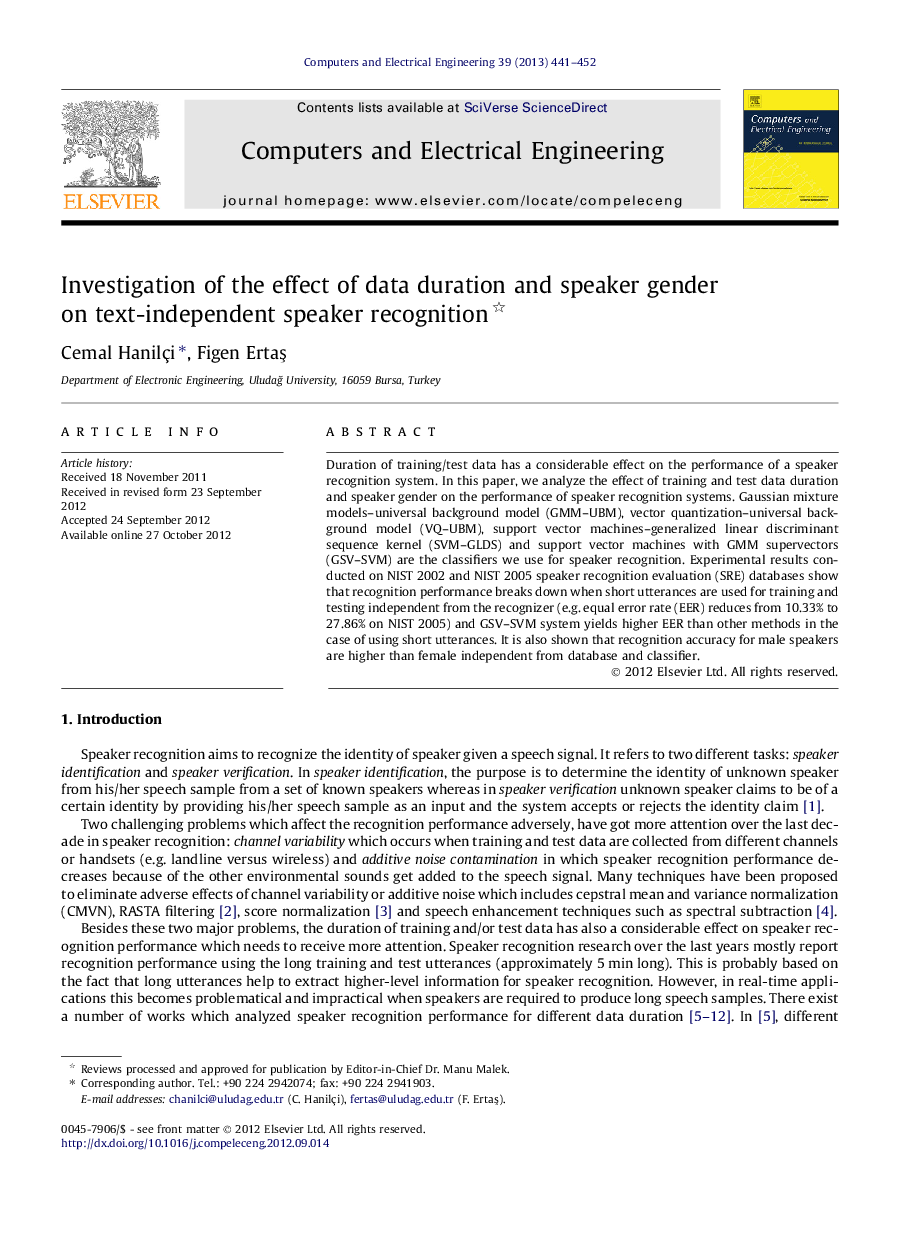| Article ID | Journal | Published Year | Pages | File Type |
|---|---|---|---|---|
| 455052 | Computers & Electrical Engineering | 2013 | 12 Pages |
Duration of training/test data has a considerable effect on the performance of a speaker recognition system. In this paper, we analyze the effect of training and test data duration and speaker gender on the performance of speaker recognition systems. Gaussian mixture models–universal background model (GMM–UBM), vector quantization–universal background model (VQ–UBM), support vector machines–generalized linear discriminant sequence kernel (SVM–GLDS) and support vector machines with GMM supervectors (GSV–SVM) are the classifiers we use for speaker recognition. Experimental results conducted on NIST 2002 and NIST 2005 speaker recognition evaluation (SRE) databases show that recognition performance breaks down when short utterances are used for training and testing independent from the recognizer (e.g. equal error rate (EER) reduces from 10.33% to 27.86% on NIST 2005) and GSV–SVM system yields higher EER than other methods in the case of using short utterances. It is also shown that recognition accuracy for male speakers are higher than female independent from database and classifier.
► In this study, we analyze the effect of data duration and speaker gender on speaker verification. ► GMM–UBM, VQ–UBM, SVM–GLDS and SVM with GMM supervectors (GSV–SVM) classifiers are used and compared. ► Experiments on NIST 2005 and NIST 2002 corpora show that data duration has a considerable effect on recognition performance. ► GMM–UBM yields the best performance for short utterances. ► Female speakers are more difficult to recognize independent from the classifier, database and data duration.
